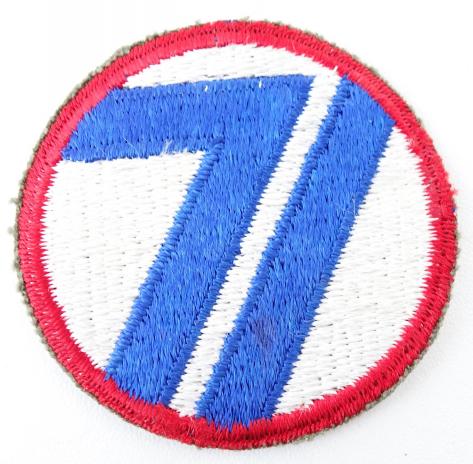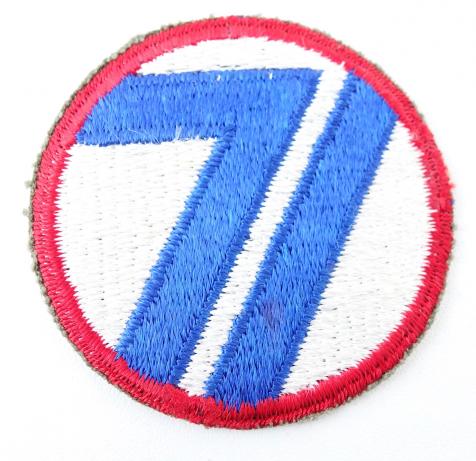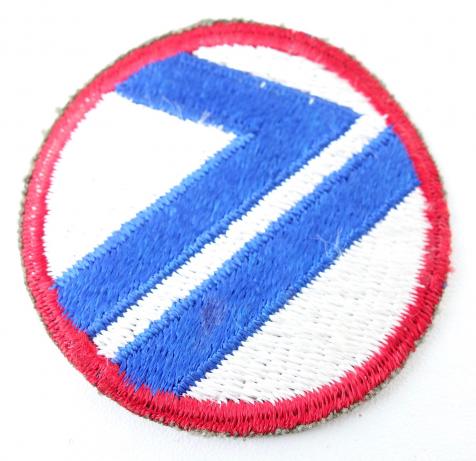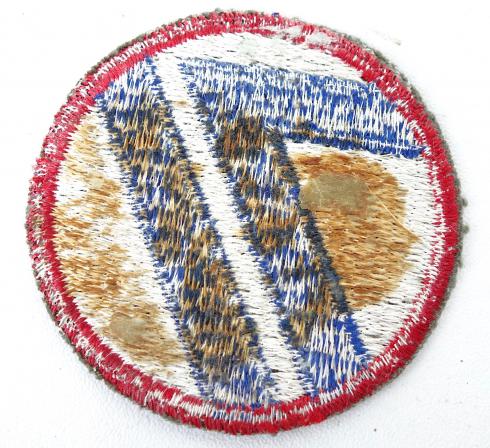US WW2 71th Infantry Division Patch
US WW2 71th Infantry Division Patch
Nickname “The Red Circle”
The division was first organized as the 71st Light Division (Pack, Jungle), intended for use in the mountainous jungle areas of the Pacific theater. Smaller than the standard infantry division, at about 9,000 personnel, its primary means of transport was hundreds of mules controlled by several quartermaster pack companies of African-American muleteers, and for artillery several battalions of 75mm pack howitzers, which could be broken down and carried by mule train. The 14th Infantry Regiment, a Regular Army unit which had been stationed in the Panama Canal Zone for years prior to the war and had received extensive training in jungle operations during that time was assigned to the division to provide the nucleus of jungle expertise. After training at Camp Carson, Colorado, the division was sent to Hunter Ligget Military Reservation in the mountains inland from Big Sur, California, where it maneuvered against the 89th Light Division as a test of the light division concept. As a result of the test it was decided that the light divisions had insufficient manpower and firepower to be effective and the concept was abandoned. The 71st Division was sent to Fort Benning, Georgia, where it was reorganized and retrained as a standard infantry division, although it remained unusual in having Regular Army infantry regiments assigned to a division raised in the Army of the United States.
Combat chronicle
Edit
The 71st Infantry Division arrived at Le Havre, France, 6 February 1945, and trained at Camp Old Gold with headquarters at Limesy. The division moved east, relieved the 100th Infantry Division at Ratswiller and saw its first action on 11 March 1945. Their ouster of the Germans from France began 15 March. The division moved through outer belts of the Siegfried Line, captured Pirmasens, 21 March, and crossed the Rhine at Oppenheim, 30 March. The 71st continued the advance, taking Coburg without resistance, cutting the Munich-Berlin autobahn, 13 April, and capturing Bayreuth after fierce opposition on 16 April. Moving south, the Division destroyed Schönfeld, 18 April, took Rosenberg, crossed the Naab River at Kallmünz on 24 April and crossed the Danube on 26 April. Regensburg fell on the next day and Straubing on 28 April. As resistance crumbled, the division crossed the Isar on 29 April and entered Austria, 2 May.
Participated in the liberation of concentration camps including one in Austria called Gunskirchen Lager, a subcamp of Mathausen, on 4 May.2 A pamphlet was produced by the US Army after they liberated the camp, called "The Seventy-First came to Gunskirchen Lager." The book recounts in detail, and with graphic photos, the tragedy they found in the camp. The complete booklet is available for free on-line.
The 71st organized and occupied defensive positions along the Enns River and contacted Russian forces east of Linz, 8 May, the day before hostilities ceased, having gone further east than any other U.S. Army unit. The division was assigned occupational duties until it left for home and inactivation 1 March 1946.
During the last several weeks of the war, the 761st Tank Battalion, an African-American unit, was attached to the 71st Division and fought with it. The 71st Division is also the formation in which Lt. John D. Eisenhower, General Dwight Eisenhower's son, served.
In January 1946, Colonel William Westmoreland was appointed commander, and was responsible for leading the units that had not yet been deactivated back to the United States so they could be demobilized.
Nice patch in very good condition.
Code: 62619
20.00 EUR






